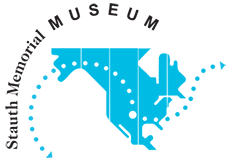
- This event has passed.
Edward S. Curtis: Indians of the Southwest
April 15, 2017 - May 28, 2017
A selection of early 20th century photographs from the Edward S. Curtis portfolio of the Southwest Indian will be on display from April 15, 2017 to May 28, 2017.
The over 50 photographs that make up the “Edward S. Curtis: Indians of the Southwest” exhibition capture many of the significant aspects of Indian culture in modernized Indian nations. Curtis was struck by the reality of the North American Indian as a vanishing race. He felt compelled to record their rites and traditions before it was too late. When Curtis began his project in 1896, the Indians were in a painful period of transition. The hallowed grounds of their ancestors were being settled and irrigation ditches were blighting the Indian’s wild buffalo hunting grounds. Famous Indian chiefs were living in prisons or on reservations. Geronimo, at age 76, was taking care of a small vegetable garden while a prisoner at Fort Sill, Oklahoma.
This exhibition is made up of photographs of pottery and other artifacts shot in such a way as to highlight their functional shapes and textures. The photographs of the ceremonial rites reflect the Pueblo Indian’s strong religious beliefs as well as the indigenous harmony between man and his environment. Among the most remarkable of the exhibition photographs are those of the pueblos and other landscapes of the tribal regions, as well as the beautiful, moving portraits of men, women and children he met during his study.
The 50+ images in this exhibition are from his portfolio of the Southwest and constitute a testimony to his ability to record significant aspects of Indian culture in modernized Indian nations. Highlights in this display include portraits of the “North Pueblo at Taos,” the Jemez pueblo, the Acomo pueblo belfry and the “Laguna Watchtower.” Varied aspects of Indian culture are detailed in portraits such as “Acomo Water Girls,” “Conchiti and Sia Pottery,” “A Feast Day at Acoma” and “Sia Buffalo Dancer.”
Among the most moving and remarkable images in the Curtis collection are the many portraits of the Indians he met during his study. This exhibit includes several fine examples of his portraits, such as “A Jemez Fiscal,” which portrays a supervisor of church activities; “Ti Mu-Conchiti,” which depicts a Cochiti girl who had moved to Sia following her marriage; and “Aiyowits! A Conchiti,” which captures the visage of Carolina Quintana who, according to Curtis, was the most mentally alert Indian woman whom he met during his study and who was responsible for compiling the Cochti relationship terms that Curtis subsequently used in his volume about Indians in the Southwest.
Also featured in this exhibition are images of some Plains Indians including portraits of men, women and children that constitute a testimony to Curtis’ ability to break down the barriers that had heretofore prevented outsiders from establishing working relationships with the native populations. His portraits of Bear Bull, Apio Mita and Stsimaki resonate with a fierce pride and determination, but also bespeak a sense of spiritual loss in the face of a recognition that a way of life was about to vanish.
The photographs in this display were selected from Curtis’s complete publication, The North American Indian, one of the largest photographic archives ever created by a single artist and probably the most profound representation of pure Indian culture ever made. The complete publication consists of 20 volumes of text with fifteen hundred small plates, plus 20 portfolios of unbound gravure plates, comprising a total of approximately twenty-five hundred images. The Curtis project took over 30 years and about one million dollars to complete. Curtis studied over 80 Indian tribes west of the Mississippi River from New Mexico to Alaska and made over 40,000 negatives.
Blair-Murrah, the organization preparing this exhibition, provides a number of exhibitions covering a variety of historical and contemporary subjects to institutions throughout the world. For more information about the content of this exhibit or if you would like to speak with the exhibition organizer, contact:
BLAIR-MURRAH EXHIBITIONS
VINTAGE HILL ORCHARD
HOSTETTER ROAD
SIBLEY, MISSOURI 64088
CONTACT: ELIZABETH MORROW, PRESIDENT
816-650-3000
elizabeth@blair-murrah.org
We are expecting many tours for this exhibit so please call in advance for groups of 5 or more! Tours/groups welcome by appointment, contact 620-846-2527 for information or to set up a tour. Business hours for the Stauth Museum, 111 N Aztec Street, Montezuma KS are Tue -Sat 9-12 1-4:30, Sun 1:30-4:30. We are closed on Mondays and all major holidays including Sunday, April 16th, Easter Sunday. Admission is free, but donations are gratefully accepted to help pay for this incredible exhibit!
